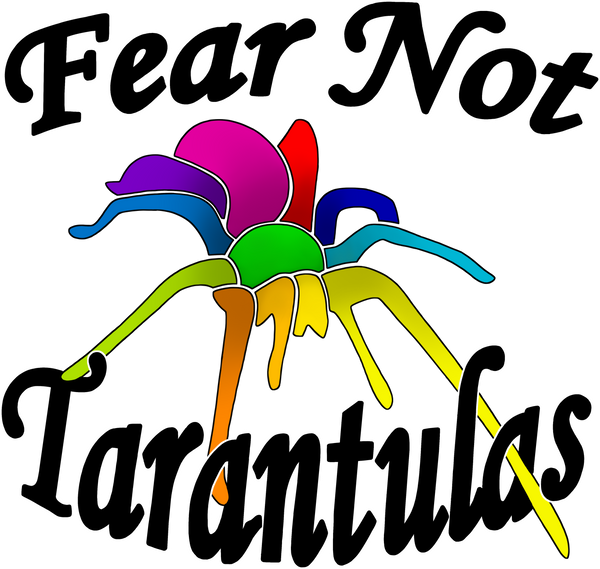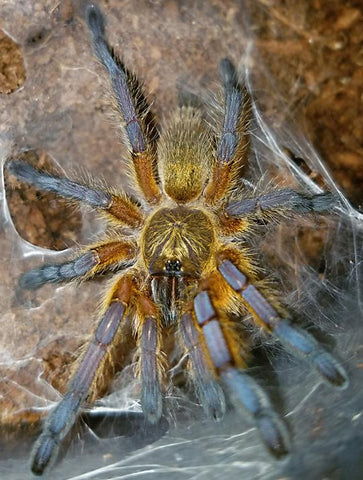About: This beautiful spider hails from the arid scrublands of Makhanda, South Africa. They live in deep burrows that they line with webbing, and will utilize grasses and plant debris in their burrow construction. When setting their enclosure up, providing a good depth of substrate is a must, and it is recommended to provide some anchor points like cork bark, sticks, or plants. This species can be dramatic, going into a defensive pose when disturbed, and staying that way for a while even after putting the lid back on the enclosure. This species does have more potent venom, and we recommend these for more advanced keepers.
Enclosures and setup
I used a basic setup for both specimens, a modified 1 quart clear plastic canister for the sling and a 1.5 gallon Sterilite container for the juvenile. I modified both to add ventilation (holes for the canister and round vents for the Sterilite container).For substrate, I used a mostly-dry combination of peat and coco fiber. After packing this down in the enclosures, I packed some dry substrate on the top. Both were offered cork bark with some plastic leaves for a hide, and I used my finger to pre-start a burrow for each under the cork bark.The juvenile has a milk cap for a water bowl, and I keep it filled with fresh water (although my girl has enjoyed filling it with dirt). The sling will be getting a water bottle cap for a dish soon. For the time being, I use a water dropper to add some moisture to the plastic plant and webbing in case it wants a drink.Both specimens took to their burrows the first night, and they have spent several weeks burrowing a bit and webbing up around the entrances. Although each has constructed a fairly deep burrow in the substrate, they are both out and visible quite often (the sling does move to one of its holes whenever I disturb its enclosure).A beauty with a voracious appetite
Both of my pulchripes have been great eaters. I drop a cricket in overnight, and it’s always gone in the morning. When I first got my sling, I didn’t have a cricket small enough for it as I was expecting a 2.5″ juvenile. Therefore, I dropped in a pre-killed cricket for it to scavenge feed on. When I checked in the morning, the sling had dragged the carcass beneath the cork bark and had devoured the entire thing. On average, I feed this specimen three times a week. While the weather is warm, I’ll be taking advantage of its higher metabolism to grow it out of the more fragile sling stage faster. TO VIEW THE REST OF THE ARTICLE CLICK HERE.


